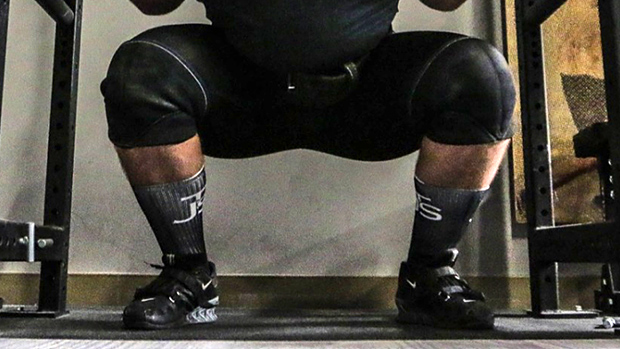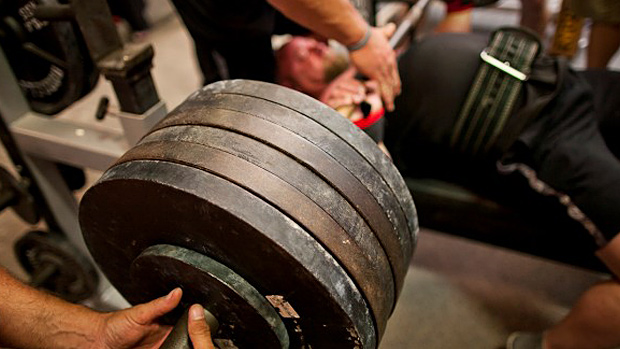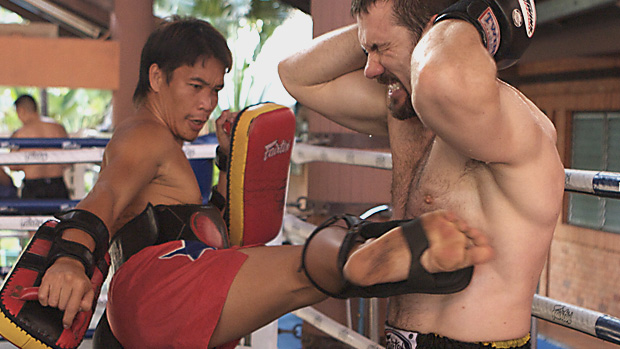Start From The Bottom
Coaches often give sermons about tightness and posture at the top of the squat after the bar is walked out. Despite their best efforts, many lifters who may be tight and rigid at the top still look terrible going into and coming out of the hole.
While mobility and stability drills have traditionally been used to address this problem, improving a movement requires actual practice of the movement while challenging your limits. Bottom-up squats teach you how to maintain that same rigid position at the bottom of the squat while forcing mobility and stability changes.
If you can learn to create as much tension and stability in this bottom position as at the top while also increasing starting strength, you'll be able to lift much more weight during a conventional squat.
Bottom-Up Squat
- Set the safety pins below parallel as your mobility and stability allows. The goal is to challenge your limits, but bad practice will never yield desired results.
- Get under the bar, making sure to feel pressure on your whole foot, and screw yourself into the ground to create tension in your hips/glutes.
- Breathe into your abdomen very deeply, exhale hard, tense the abs and then breathe again into your tightly braced trunk.
- Stand up in perfect position while driving with your hips.
- Take your time in the set-up and be sure to exhale and inhale into that braced position before every rep.





